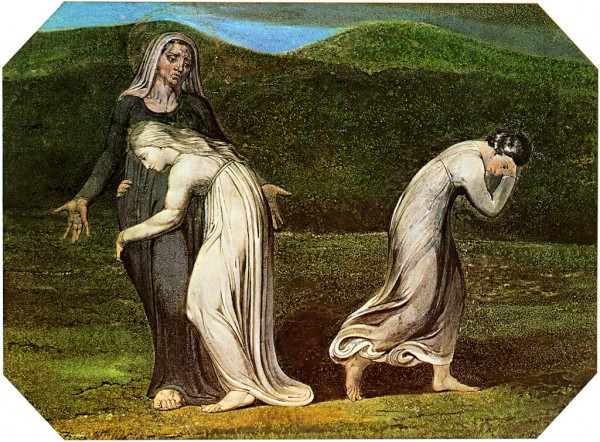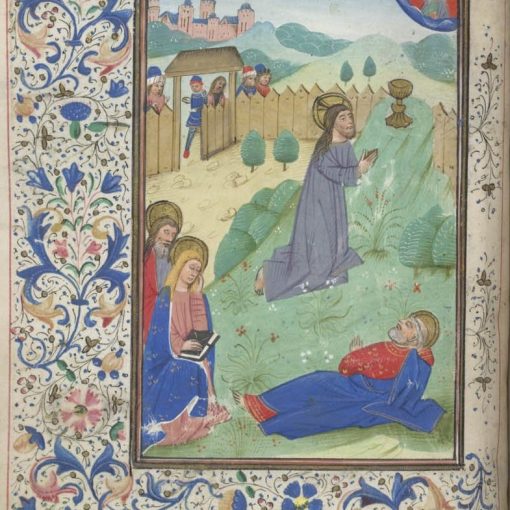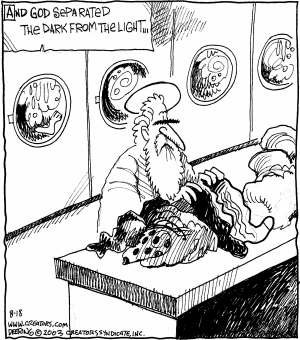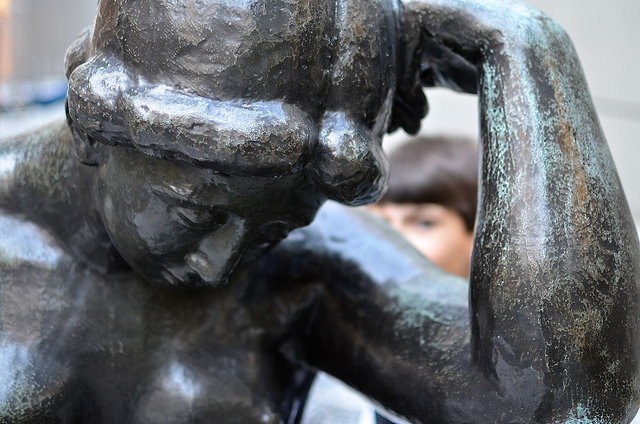Ruth 1.15 So [Naomi] said, “See, your sister-in-law has gone back to her people and to her gods; return after your sister-in-law.” 16 But Ruth said,
“Do not press me to leave you
or to turn back from following you!
Where you go, I will go;
Where you lodge, I will lodge;
your people shall be my people,
and your God my God.
17 Where you die, I will die—
there will I be buried.
May the LORD do thus and so to me,
and more as well,
if even death parts me from you!”
18 When Naomi saw that she was determined to go with her, she said no more to her.

Now I will be the first to say that reading the Hebrew Bible like Pilgrim’s Progress is inappropriate and that we must understand, as best we can, the stories in their own historical, social, and religious context. But as Barry Bandstra notes,
The story of Ruth is one of those rare Hebrew stories that on its most basic level was intended to be paradigmatic.
We are supposed to view the key figures as exemplars whom we are to emulate. There is much debate about whether or not Ruth 1:15-17 is a conversion or not. Is Ruth making a willful decision to follow YHWH, as her oath in v. 17 might imply, or is she simply assuring Naomi that she will remain with her and adopt Israel’s customs and practices?
I am not sure that it is possible to answer that question. In its historical context, would there be a difference? It seems unlikely to me that the notion of conversion, at least in the sense that becomes common place in the late second Temple period, involving doctrinal debates and intellectual persuasion, was operational either in the period of the Judges or the early Persian period. If Ruth was going to follow Naomi, to live with her in Judah, then she would have been expected to take on their customs and practices. If nothing else, this is a story of loyalty.
In spite of the lack of certainty, or perhaps because of it, I believe there is an important lesson within this passage, that of loyalty and steadfastness even if we are not certain of what lies ahead. I think this is as true in our so-called faith commitments as it is for the physical moves that Ruth’s migration from Moab to Judah represents. When we make our own decision to follow Christ we do not know all that lies ahead. We know that we will dies (odds are good on that) but what lies between now and then is unknown to us.
For Ruth, all she knew was that she would be with Naomi and that there would, in all likelihood, be many who despised her, but for her part she would simply stay by Naomi’s side. “Where you go, I will go.” So simple and profound a statement that James Avery has made a mint on it. Nonetheless the allegory is true for us as Christians today. Wherever we go God is with us. The question is are we willing to commit as Ruth did to go wherever God will take us?





